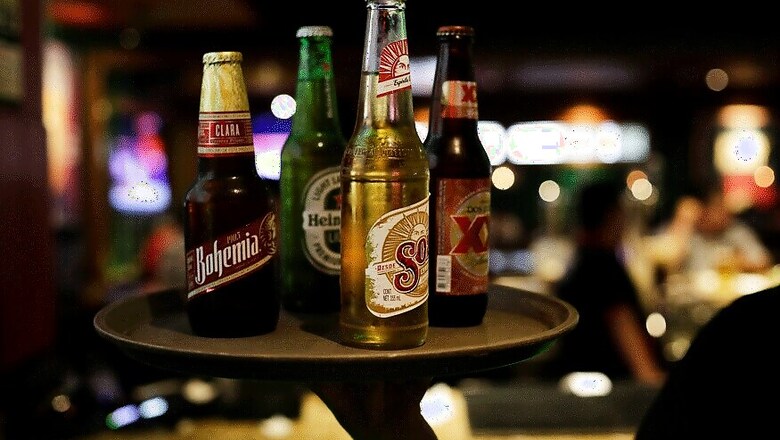
views

Wine is stale grape, well, almost. Then what is beer? What does it take for a grain of barley let out its hidden amberessence, which we all love to see swirling in a long glass?
They say, beer is bread, bread beer.
The first beer in the history of mankind was a loaf of bread some absentminded hunter-gatherer-cook left out in the open. The bread invited yeast cells from the air, and gathered enough buzz. Some ancient Sumerian took a close look, tasted it, and could have stood up bravely to his wife for the first time in his marital life in the domestic fight.
Soon Sumerians began to send nearly 40% of the grains they produce to make the funny new food - beer!
Read this all, before you dash off to your kitchen, take a handful of wheat, rush out, toss it in the garden, keel over it with a glass, waiting for beer to squirt out. It is not that simple. An ear of barley or any other grain will not turn into beer over a night.
Here's the story of its genesis:
Unlike the soft grapes, which turn into wine with the slightest provocation, grains that make beer are tough guys. Those wanton yeast cells that fly by will find it extremely difficult to get through the callous walls of grains. So it looks at us for help.
Here is what we do:
The grains, (they use oats, wheat and other grains. But the most common is barley), once cleaned, are soaked in water, drained and evenly spread on a flat surface. With enough moisture, grains are fooled into thinking thay are well under the soil, and can start germinating. Enzymatic changes inside the seeds create starch reservoirs (yeast cells smack their lips) useful for plant’s early stage of life.
This is the right moment. Now step on the brakes to get the germination grounded to an immediate halt or else the grains would turn these starch reservoirs formed inside into unaccessible mess and themselves into barley fields (We are here for beer, not for agriculture)!
Now toss the semi-germinated seeds into a kiln, a modified oven. Punish them with high temperature until all such ambitions of turning into plants are blighted in the buds (The more you roast, the darker the beer will be at the end).
Feel the baked grains, feel its crunchiness, its nutty nature.
What we have now at hand is malted barley with plenty of starch inside. The fussy yeast cells still wait outside. Only if the starch in malted barley is converted into fermentable sugar they would dig in. Which means our next step is to crack open the grains, expose the starch created during the malting process.
Mashing is the name of the game.
During mashing malted grains are steeped in boiling water that hydrates the barley, activates the malt enzymes, and converts the grain starches into fermentable sugars!
The feast is ready. Nearly. There is a late entrant.
It is now time to introduce hops, a very important ingredient in beer.
Hops is the member of cannabis family, a leafy vine plant. Ancient men while experimenting with the divine drink threw everything that came their way including their nagging wives (almost) into their brew to improve its taste and kick. Hops stuck for good reasons.
The green buds lend flavour and aroma to the drink. Moreover they are natural preservatives. They also have this killer image of a bitter, masculine additive that could balance out the malty, feminine sweetness of beer.
The hungry yeast cells straining at their leashes are now let loose on the sugary soup, poured into a vat. The lid is closed. Fermentation begins. In a few weeks you get a liquid which is only one stop away from beer.
Brewers supercool the liquid to separate the yeast sediments from the drink.
It is ready! And check, it is beer-o-clock now!




















Comments
0 comment